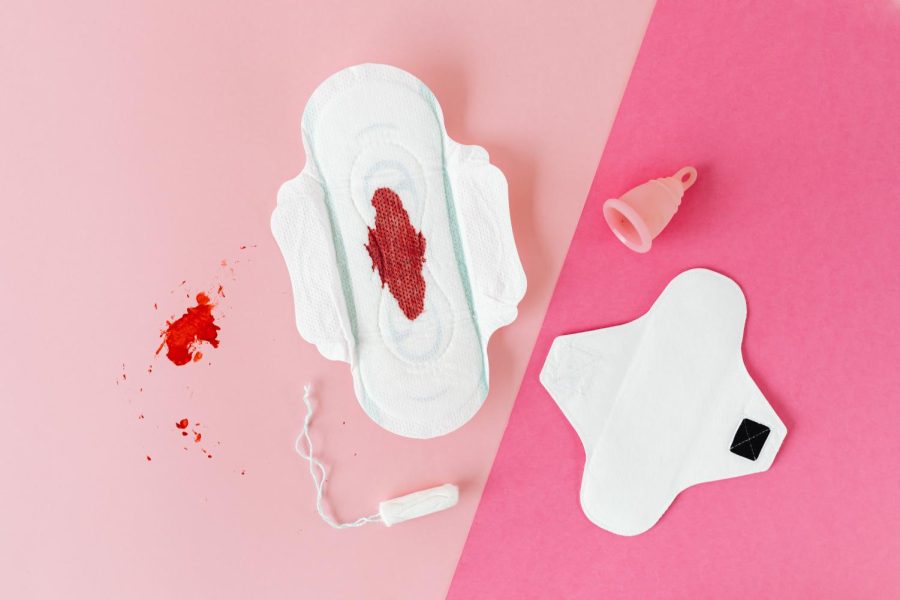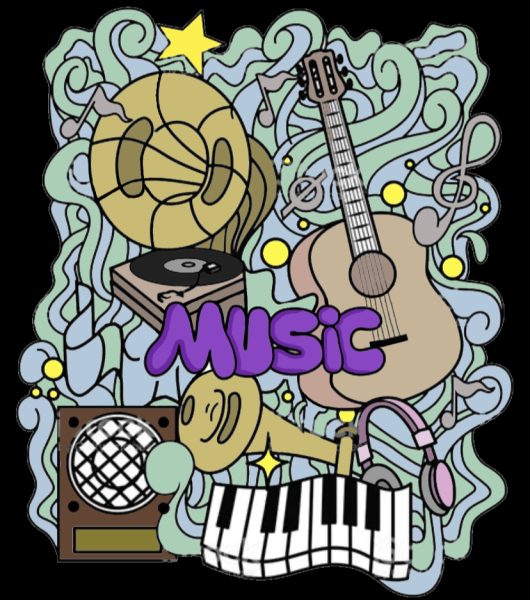Busting Menstruation Myths
In honor of Women’s History Month, here’s helpful information for people who menstruate, and especially those who don’t!
March 9, 2023
Whether you are a person who menstruates or not, there are tons of misconceptions about periods. From period cramp pain to how sanitary a vagina is, myths about menstruation are deceiving even those who experience ‘that time of the month.’ Ultimately, blood makes everyone a little uncomfortable, but ignorance is definitely worse. Striving to understand each other’s experiences is the first step to attaining one of the most powerful soft skills: empathy. So let’s get down to the menstruation myth busting!
People are overly emotional and hormonal on their period.
Actually, the majority of symptoms are experienced in the days leading up to one’s period. That’s why it’s called Premenstrual Syndrome (PMS). Estrogen levels in the body plummet in the days before one’s period starts while progesterone levels in the body spike. “Estrogen is linked to serotonin, the “happy hormone,” and progesterone is linked to the part of the brain associated with fear, anxiety, and depression,” explains Heathline. This causes a host of symptoms for many people who menstruate such as tension and anxiety, depression, crying spells, and irritability. Further, there are several physical PMS symptoms as well such as joint or muscle pain, headache, fatigue, bloating, constipation, diarrhea, and many more. These physical and emotional symptoms may persist through one’s period as well.
It’s gross and dirty down there!
Contrary to common belief, the vagina is a self-cleaning organism (unlike the penis).
“Unless you have symptoms of infection or other problems, you don’t need to do anything besides basic hygiene,” says Dr. Reid, an OB/GYN at the OHSU Center for Women’s Health. Another layer to this misconception is the thought that menstrual blood is dirty. The blood that is shed from the membrane lining the uterus is just as clean as the blood in the rest of the body. There’s nothing dirty about it!
Menstrual products are 100% safe to use.
While sanitary products are crucial for menstruating people, many products (ranging from pads and tampons to washes or sprays and powders) actually contain hazardous chemicals. This includes “volatile organic compounds” such as benzene which is categorized as a carcinogen to humans. The Hall of Shame menstrual products is a list of specific products to avoid provided by Women’s Voices for The Earth. Further, these toxic chemicals “may result in serious health problems, like increased risk of breast cancer, reproductive problems, asthma, and allergic reactions.” These potentially harmful compounds are especially problematic because vaginal tissue is far more absorptive than other tissue. Ingredients to watch out for in menstrual products include synthetic plastic materials (BPA or BPS), pesticides and bleach, dioxin, fragrance chemicals, and dyes.
Many brands are coming out with cleaner and safer products like Seventh Generation. Fortunately, there are products that avoid these complications altogether such as menstrual cups, disks, and certain period underwear, which are far better for the environment as well. Check out all of these options here.
Period cramps don’t hurt that bad.
Ever seen a natural birth in a movie? The woman screaming in excruciating pain as beads of sweat drip down her face? Studies show that severe period cramps are caused by more powerful uterine contractions than those when giving birth.
Dysmenorrhea is the clinical diagnosis for extremely painful periods. The National Library of Medicine states that “Dysmenorrhea is very common”. This condition inhibits 20% of those who suffer from performing daily tasks.
Additionally, endometriosis is an autoimmune condition that affects the menstrual cycle as well as fertility. This little-known condition causes the lining of the uterus to grow outside the uterus leading to painful menstruation, intercourse, and bowel movements/urination as well as infertility. According to the World Health Organization, endometriosis affects 10% of, or 109 million, menstruating people world-wide. With no known cure, treatment is focused on controlling symptoms.
So when a menstruating person says they’re in pain, believe them!
Your period lasts one week and the cycle lasts one month.
Periods vary in flow, pain levels, hormonal symptoms and also length! A normal period ranges from two to seven days of bleeding and a healthy cycle lasts anywhere from 21 to 35 days, according to Henry Mayo. Clue, a period tracking app, says “for adults not using any form of hormonal contraception, a typical cycle length ranges between 24 to 38 days.” Hormonal birth control can also cause fluctuations in menstruating people’s cycles.
There are many other causes for cycle fluctuations including diet, stress, jet lag, working night shifts, exercise, weight loss, or taking an emergency contraception pill (the morning-after pill). More causes and helpful information about menstruation can be found on the Clue website.
Further, more severe medical conditions like disordered eating, polycystic ovary syndrome (PCOS), pelvic inflammatory disease (PID), and uterine fibroids can cause period irregularities. If you’re concerned about period irregularities, speak to your healthcare provider.
Ultimately, misconceptions around periods are pervasive. Hopefully now, you’re more aware about the truth about menstruation, so there’s no need to OVARYact when that time of the month comes around!













